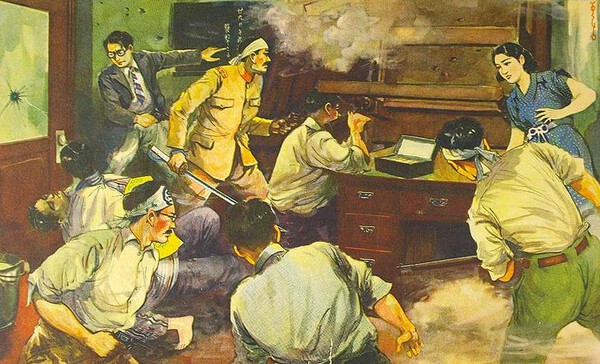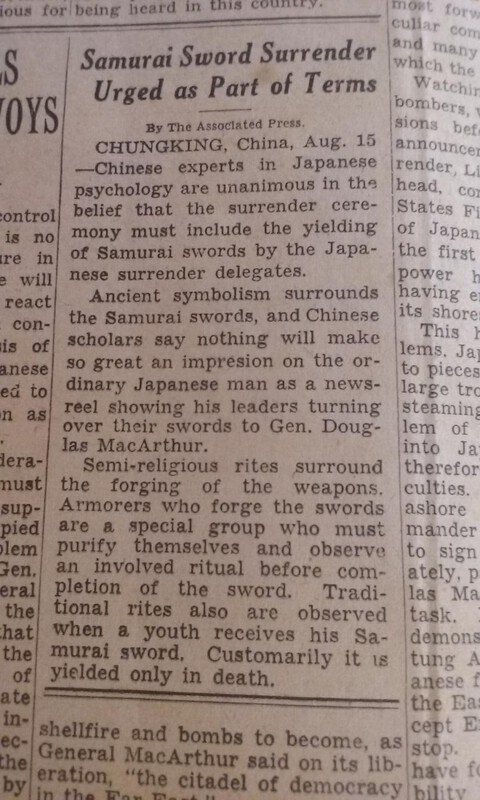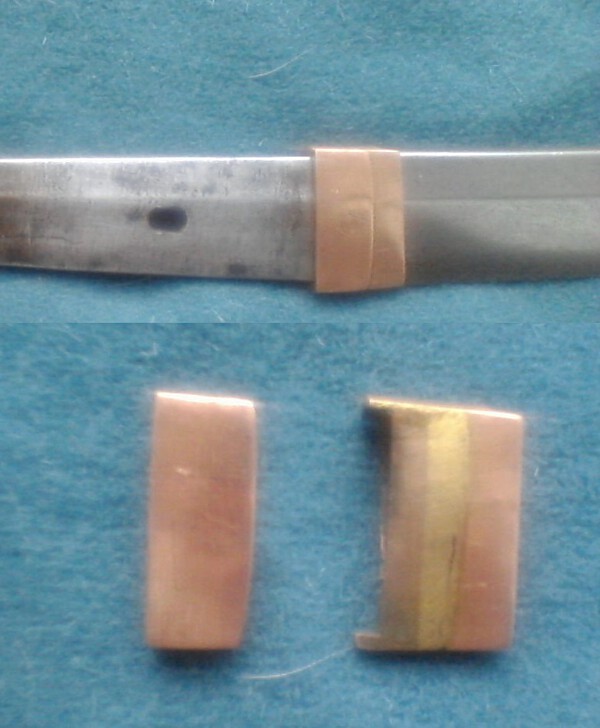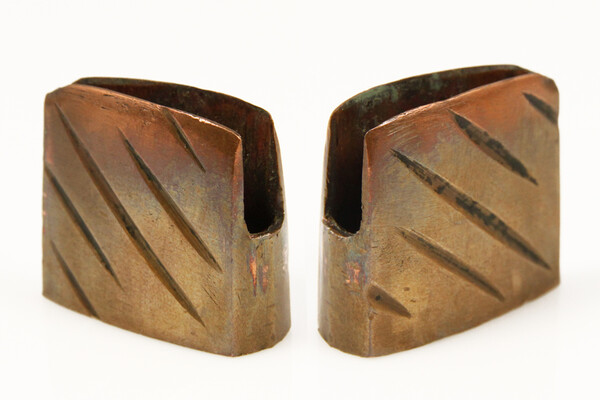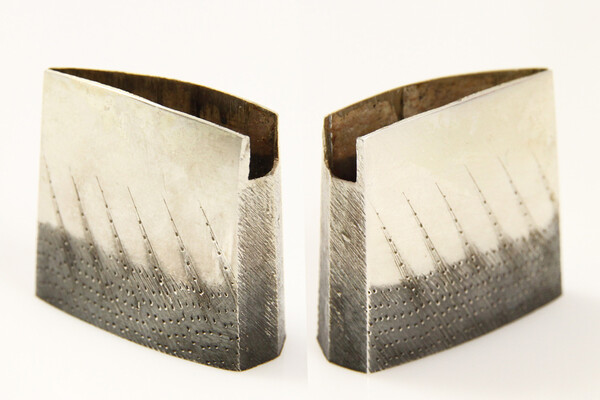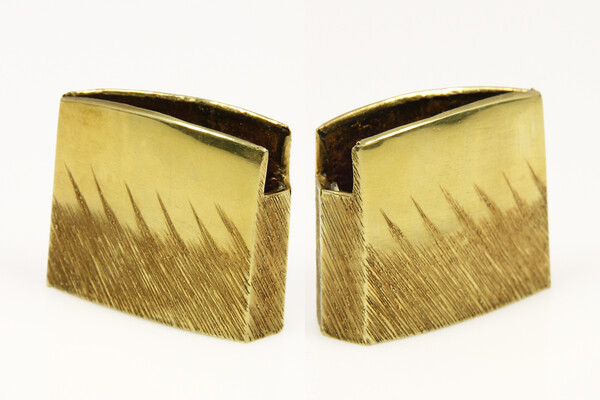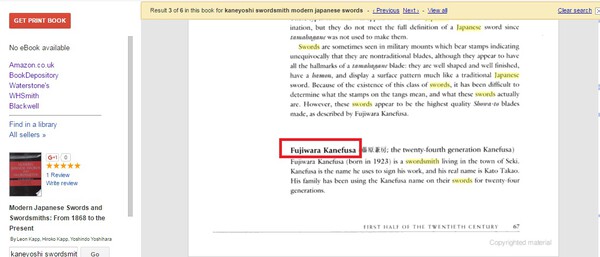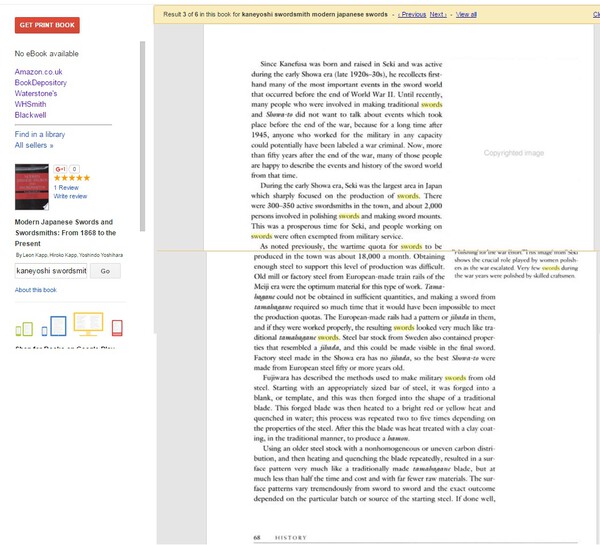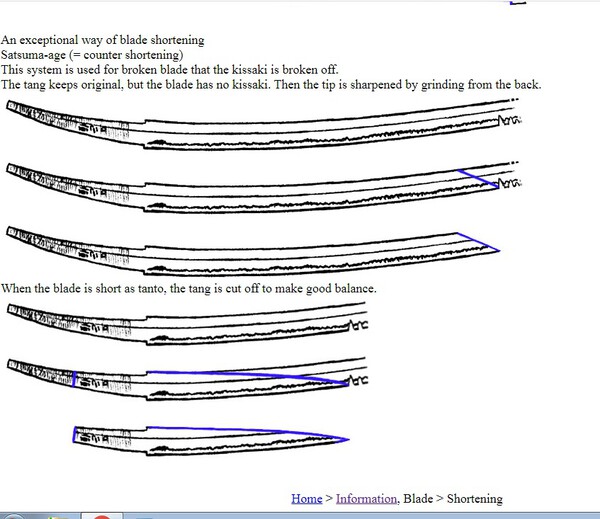-
Posts
1,690 -
Joined
-
Last visited
-
Days Won
11
Everything posted by Dave R
-
Not really, just buy a damaged chuso from Eb**! Not a perfect one, because THEY are rare.
-
They look like Chuso release buttons for Shin Gunto repurposed as menuki. Looks like a bit of a late war substitution, either because of shortages or to save money.
-
Other than G.C.Stones "Glossary" is there any other source that does not refernce Mr Stone. Regarding quality, are there plain versions of these blades? Quality is in the eye of the beholder, I have a (personal) feeling that in Edo Japan any blade (or any other accessory) that left the kitchen and was seen in public would be mounted to reflect the status of the wielder.
-
Mr George Cameron Stone has a lot to answer for.
-
And which came first? This looks like later work over the original Rain pattern.
-
Which possibly tells you how often the owner expectetd to draw it, or how happy he was to pay for new saya work..... More likely it is very shallow relief and no problem for a man able to afford that level of workmanship.
-
It certainly has that look, and it would explaing the nakago and machi.
-

New sword bought home by USMC vet from Tsing Tao 1945
Dave R replied to Dean1981's topic in Military Swords of Japan
Possibly, just possibly. There was some bloody weird stuff going on in China, including Japanese "Ronin" masquerading as as native Chinese and engaging in "False flag" operations..... And civilians fighting for their lives either as genuine victims or propaganda shills. -

New sword bought home by USMC vet from Tsing Tao 1945
Dave R replied to Dean1981's topic in Military Swords of Japan
Personal opinion, a nice old sword and very abused. This looks like an Okashi To because there is no same under the wrap, and a typical amature re-wrap using the original Ito. Possibly even done in China (Tsing Tao) because I have seen something like from there before. Also ooh ooh, vermilion saya, usualy a sign of Satsuma Han origin, done because Tokugawa hated it.... Satsuma Samurai studied ways to be annoying to the Tokugawa regime. -
Given that it was very cheap, treat it as a fun piece, that you can let others get their fingers all over it and keep the good ones safe!
-
These might be profitably posted over at Japanese Militaria in the sense that Mr Komiya might know what they are. He has access to and can translate original IJA regulations, and has delivered some useful revelations over the years already.
-

First purchases for comment - two wakizashi part 1
Dave R replied to Niall's topic in General Nihonto Related Discussion
I would suggest getting some "good" Uchiko, perhaps from Namikawa Heibei ( https://www.namikawa-ltd.com/product-list?keyword=uchiko&Submit=Search ) and having a good go over the blades. They are not in polish so you will lose nothing, and you are doing nothing that their previous owners did not do. It might bring out the hamon a bit more. -
Some time back Hanwei aka Paul Chen produced a good repro' Shin-Gunto, it cost as much as a decent real one, because that's what quality costs....Not made any more for one reason or another. I awaite developments.
-
-

First purchases for comment - two wakizashi part 1
Dave R replied to Niall's topic in General Nihonto Related Discussion
There is one I have, and when I draw it the most extraordinay smell of scorched or burnt wood comes with it. Old blade and original saya. -
Sadly I am a bit poor at taking pics, especialy when it comes to fine detail, but these are the habaki on blades I own, that I think worth sharing. I admit to having a liking for two piece habaki and taking it as a clue to a previous owners opinion of a blade.
-
At one of the Northern To-Ken meetings there was some discussion about fine detail punched work on plain soft metal tosugo, particularly the Nanako pattern. It seems it's usualy done by the wife of the craftsman, while sat in the house at the "kitchen table". There is a solid tradition of domestic production of small parts for crafts and industry in Japan..... Literaly Mom and Pop businesses.
-
I wondered why it had moved!
-
Right handed craftsman?
-
I had a bit of a laugh at the last bit! It is an old pattern, and as I understand it cat scratch usually describes a Habaki with a few deep scratches, whereas rain is a much more controlled pattern. You get all sorts of variations in between. I would suggest, tentatively, that the more elaborate the habaki, the more likely that it was a nihonto, old or new production. It's also a little extra "gloss" on your sword for not a lot of work.
-

Request for Identification Assistance
Dave R replied to EckartF's topic in General Nihonto Related Discussion
A nice explanation here.... http://www.ksky.ne.jp/~sumie99/suriage.html -
Regarding the Seki forges, the writer references an individual Fujiwara Kanafusa aka Kato Takao who worked there. The problem with orginal research is that you cannot reference another work!
-

Matching "Type 3" gendaito with random Type 3 scabbard
Dave R replied to Bruno's topic in Military Swords of Japan
Perhaps I am unusually luckybut I have had four decent "random"matches with Gunto blades to Gunto scabbards, or perhaps the production parameters were that rigid! -
Railtrack blades are well documented, but are more something done in Seki, rather than by Mantetsu. Regarding Sugaha Hamon, I have not seen anything about problems during yakiiri before, but that traditionaly it made for a tougher sword, interestingly modern neutron imaging has confirmed this.... http://www.militaria.co.za/nmb/topic/23465-neutron-imaging-of-ancient-Japanese-swords/
-

Need help identifying tanto
Dave R replied to 0Takeda0's topic in General Nihonto Related Discussion
This is when a blade would have been reground in what can be called "Satsuma age" Link to the original site here..... http://www.ksky.ne.jp/~sumie99/suriage.html Diagram and a pic of one in real life below.




